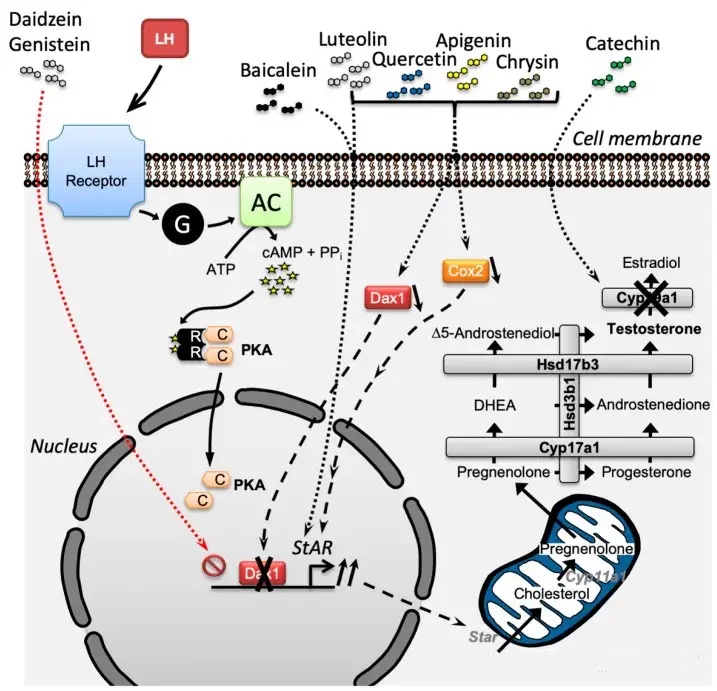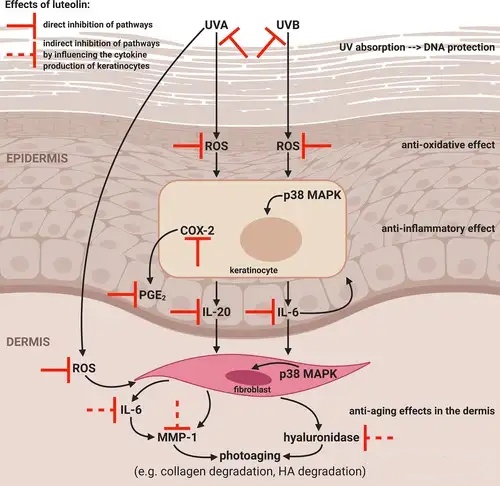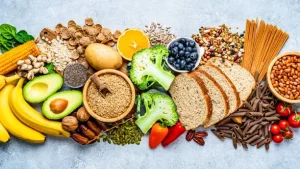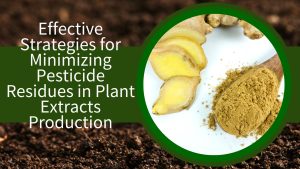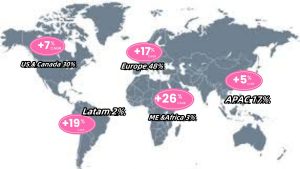Luteolin, also known as 3′,4′,5,7-tetrahydroxyflavone, is a common flavonoid found in a variety of plants, including fruits, vegetables, and herbs (vegetables and fruits rich in luteolin include celery, parsley, broccoli, onion leaves, carrots, peppers, cabbage, apple peels, and chrysanthemum). Luteolin exhibits multiple biological activities such as anti-inflammatory, anti-allergic, and anti-cancer effects, and biochemically, it can act as an antioxidant or pro-oxidant. In plants, luteolin is often glycosylated, and during absorption, the glycosides are hydrolyzed into free luteolin. Some luteolin is converted into glucuronides as it passes through the intestinal mucosa. Luteolin is heat stable, with relatively low cooking losses.
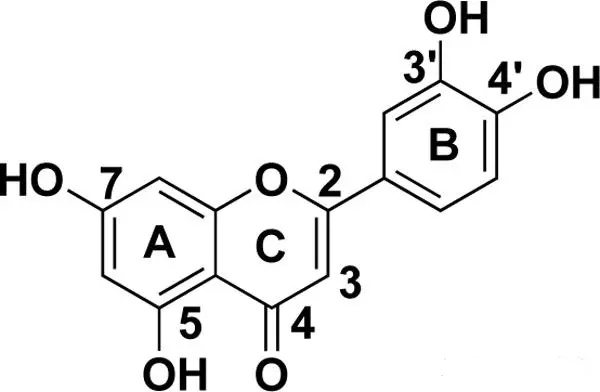
1. Tumors and Immunity
Luteolin can inhibit IGF-1-induced activation of IGF-1R and Akt, as well as phosphorylation of Akt targets p70S6K1, GSK-3β, and FKHR/FKHRL1. It eliminates transformed cells by inducing apoptosis. [The intrinsic pathway involves the functional impairment of mitochondria by pro-apoptotic Bcl2 family members (including Bax, Bak, and Bik), leading to the loss of mitochondrial membrane potential and the release of cytochrome c to activate caspase 9.
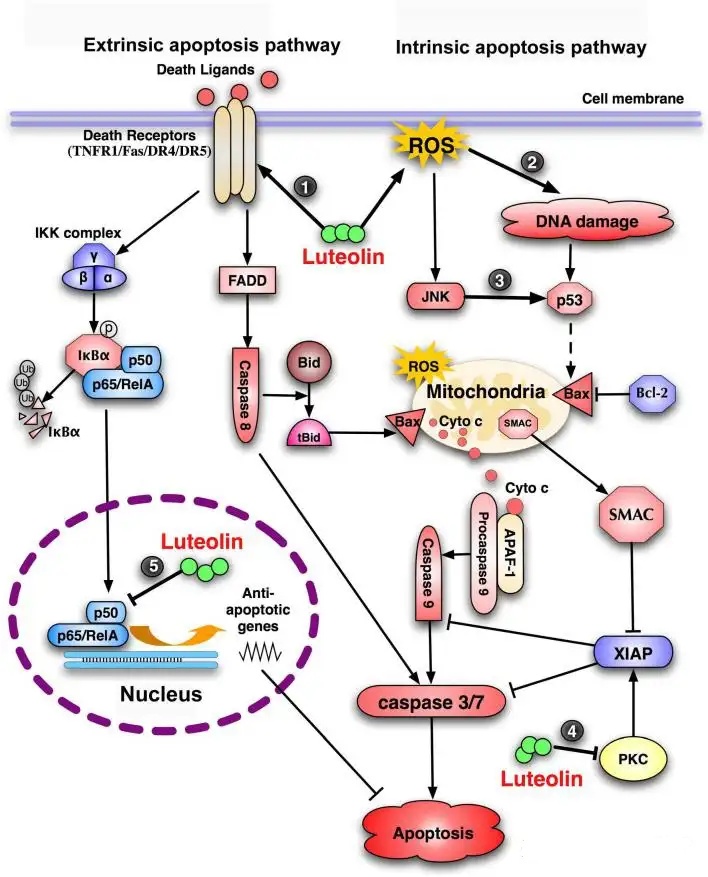
(1). Luteolin’s Autophagy Induction Mechanism
The main effect of luteolin is to increase LC3 (microtubule-associated protein 1A/1B-light chain 3) by activating caspase and beclin1. Luteolin also inhibits cancer cell progression via the Wnt/β-catenin pathway and may significantly halt the cell cycle by reducing Akt phosphorylation, which further leads to dephosphorylation and triggers GSK-3 (glycogen synthase kinase).
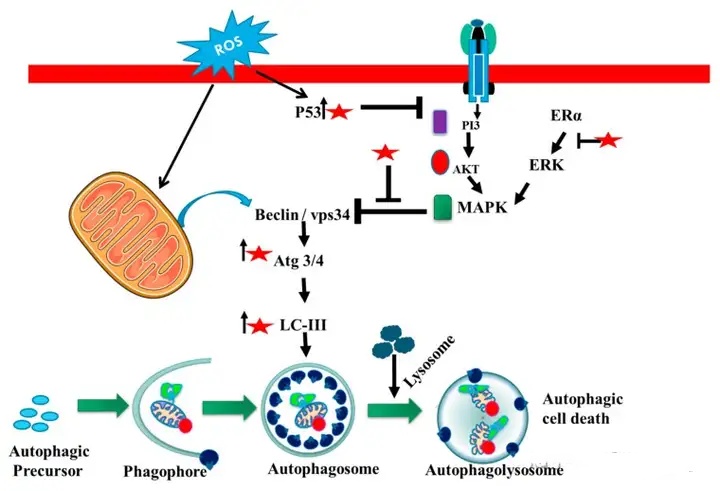
(2). Luteolin’s Immunomodulatory Mechanism
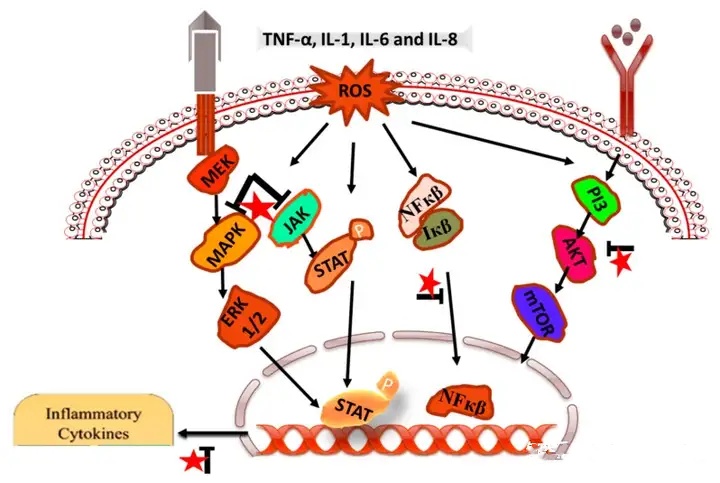
2. Skin Aging
Shortwave UVB radiation causes skin damage within 24 hours of exposure, characterized by sunburn cell formation, induction of cyclobutane pyrimidine dimers (CPD), oxidative damage to cellular components such as lipid membranes, mitochondria, DNA, and proteins, as well as acute inflammatory responses.
Luteolin protects human keratinocytes and fibroblasts from the harmful effects of UV radiation through a complex mechanism involving UV absorption, DNA protection, antioxidant, and anti-inflammatory properties (Figure 2). This is significant because even low doses of UVB exposure are sufficient to cause DNA damage in human skin cells, suggesting that luteolin may help prevent skin cancer development. Additionally, this indicates that luteolin is a promising candidate for preventing/reducing the effects of photoaging.
Luteolin also counteracts UV-induced ROS generation in the skin by stabilizing radical species, inhibiting pro-oxidative enzymes, and inducing antioxidant enzymes. Studies have shown that luteolin effectively suppresses UV-induced pro-inflammatory signaling pathways, with typical targets being COX-2 or NF-κB-dependent cytokines such as IL-6. In the final step, luteolin’s anti-aging effects in the dermis are achieved by inhibiting various enzymes like hyaluronidase and MMPs.
3. Testosterone in Males
We have demonstrated that luteolin can increase steroidogenesis in Leydig cells by upregulating StAR expression. Luteolin can activate Fdx1 (Ferredoxin 1) transcription in MA-10 Leydig cells.
Luteolin can also inhibit Cox2 expression, thereby promoting StAR transcription. Other reports indicate that luteolin improves mitochondrial cholesterol transport in MA-10 stromal cells by increasing StAR protein levels, thereby enhancing cAMP-dependent steroidogenesis. Additionally, luteolin increases StAR transcription by inhibiting Dax-1 expression.
In Summary: Flavonoids with a 5,7-dihydroxychromone-4-one skeleton tend to increase StAR expression, thereby contributing to increased testosterone production in testicular Leydig cells.
